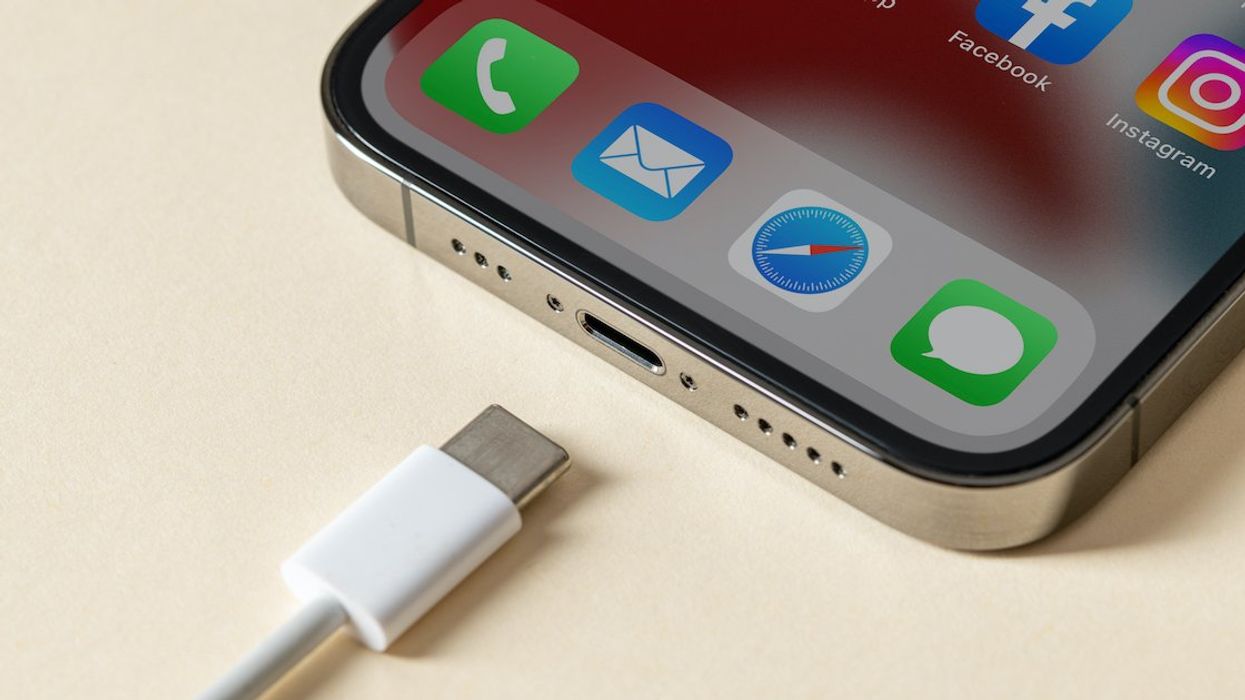Canada Wants A Single Charger Type For Most Electronics— No More New-Phone-New-Charger B.S.
The EU is already making this a requirement.

A smartphone and charging cable.
Right now, phone makers have complete control over the shape of your charging ports. With every new device, they use that control to squeeze as much money out of you as they can. But their charger stranglehold could be coming to an end. The Government of Canada plans to start looking into standardizing charging ports across manufacturers. And not just for phones.
The proposed 2023 budget raises the possibility of single charger types for phones, tablets, cameras, laptops and "other electronic devices."
Such a measure, the government says, could both reduce waste and save consumers some money, since they wouldn't have to buy a new charger every time they need to update their phone or buy a new laptop.
However, there aren't yet definite plans to introduce new regulations. So far, the government has only committed to "work with international partners and other stakeholders to explore" the possibility of a standard charger.
But there's precedent elsewhere.
The European Union has already adopted what it calls a "common charging solution." By 2024, many electronics sold in EU member states will have to have USB-C charging ports.
The rule applies to "all handheld mobile phones, tablets, digital cameras, headphones, headsets, portable speakers, handheld videogame consoles, e-readers, earbuds, keyboards, mice, and portable navigation systems." It will extend to laptops in 2026.
Moreover, electronics vendors will have to sell devices and chargers separately.
The measure is expected to reduce annual electronic waste by 980 tons.
The EU rule change comes after an unsuccessful attempt to get electronics producers to voluntarily implement a single charging port.
We'll see how — and if — the measure manifests in Canada.
This article's cover image was used for illustrative purposes only.

